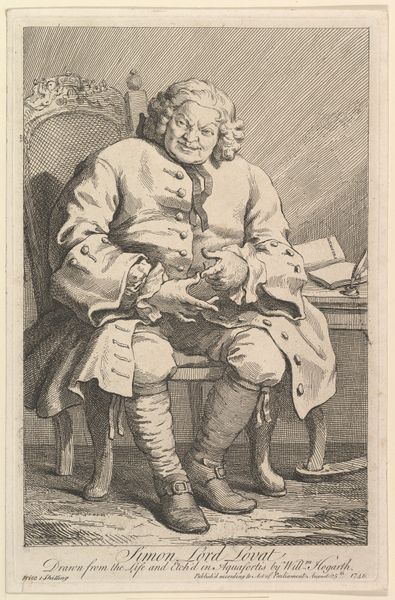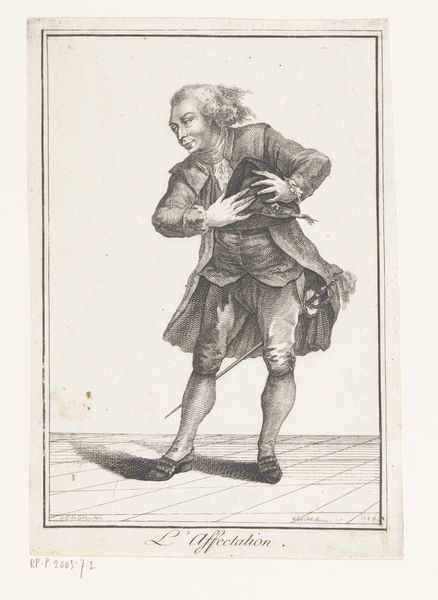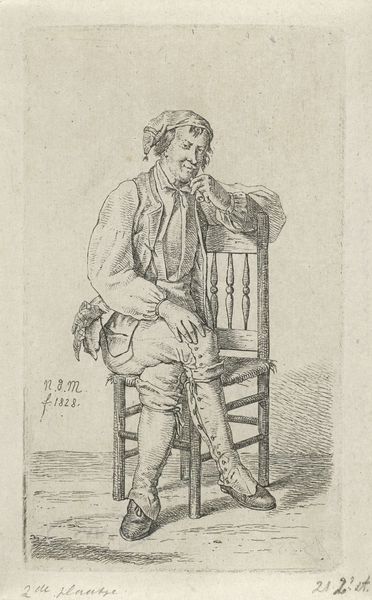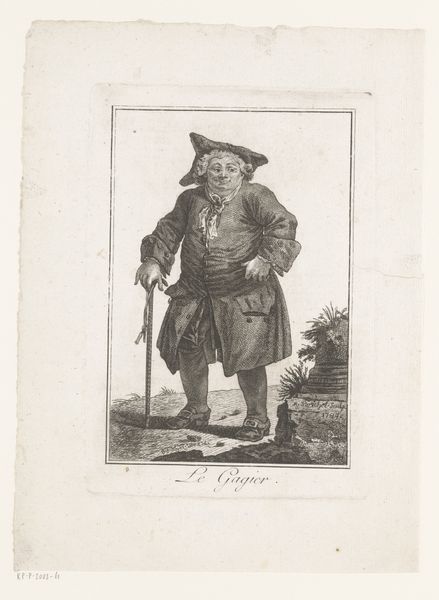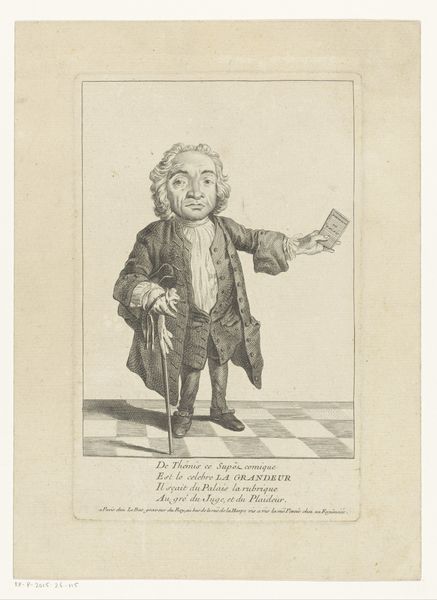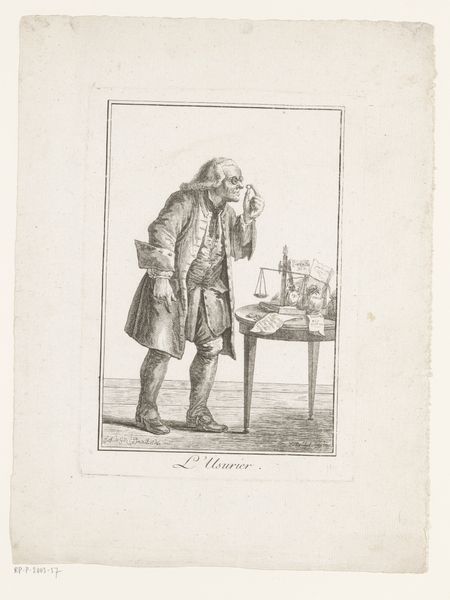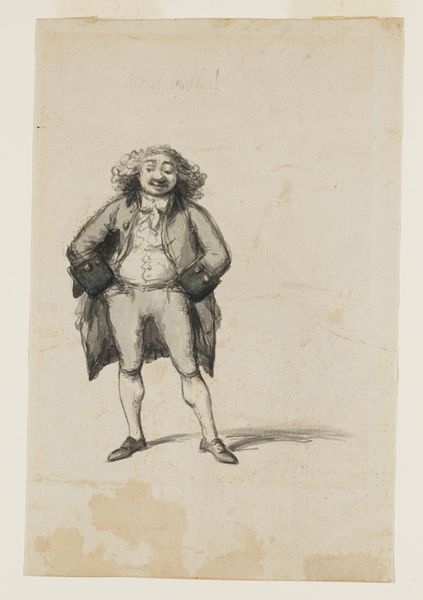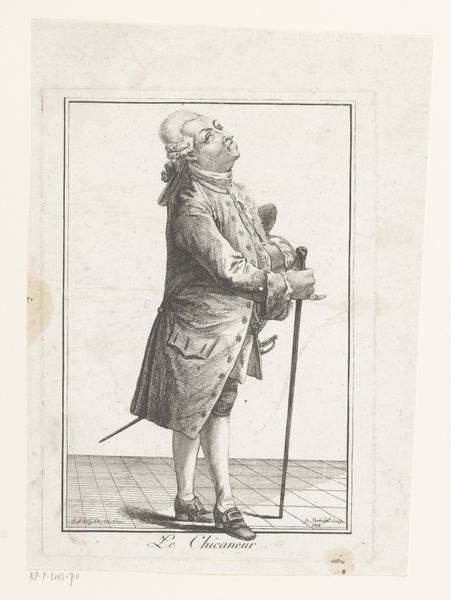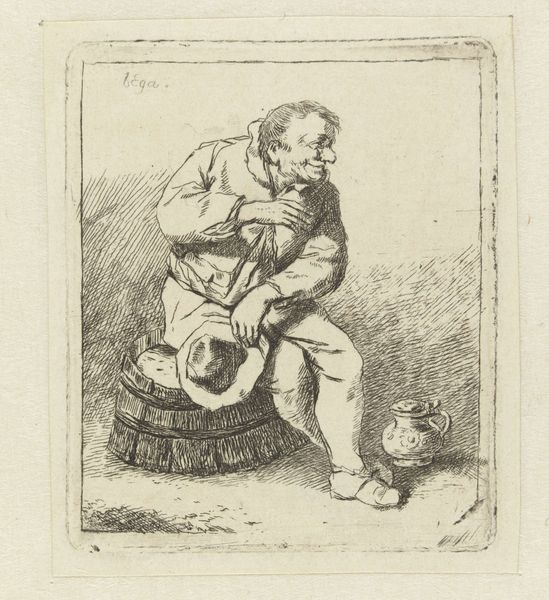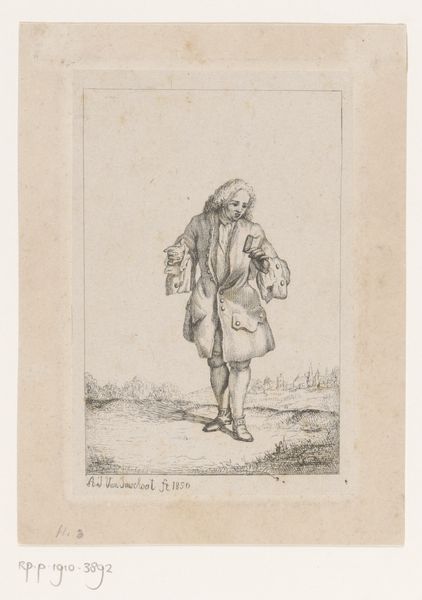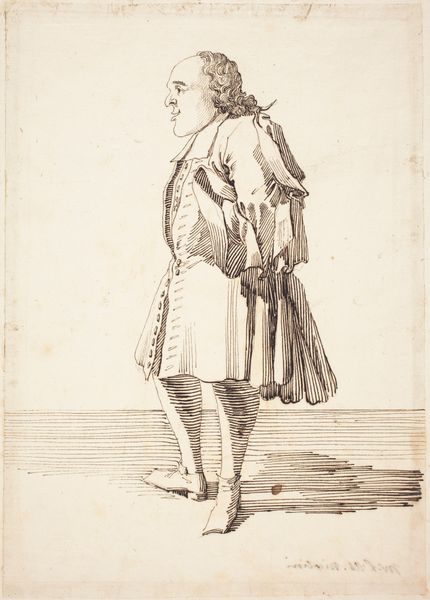
print, etching, engraving
#
neoclacissism
# print
#
etching
#
caricature
#
old engraving style
#
pencil drawing
#
genre-painting
#
engraving
Dimensions: height 228 mm, width 160 mm
Copyright: Rijks Museum: Open Domain
Curator: What a striking image! "Worst etende man," or "Man Eating Sausage," rendered in 1784 with a distinctive etched and engraved style. The Rijksmuseum holds this print, teeming with fascinating details. What is your immediate reaction? Editor: Viscerally, I find it quite unsettling. There's a gluttonous quality, heightened by the man's bulging physique. It evokes a grotesque, almost nightmarish sense of indulgence. Curator: Indeed. The caricature is palpable. The print arrives during the Neoclassical period, yet this strays from the era's usual focus on heroism, instead presenting a less flattering portrayal of human nature. This work participates in the satirical currents evident in the art market of the 18th century. Editor: Precisely. Notice how the sausage acts as a phallic symbol, emphasized by his lascivious stare. The contrast of textures also fascinates me—the rough-hewn table against his soft, yielding flesh suggests a primal appetitive drive dominating his existence. The image reads to me like a symbolic excess of the bourgeoisie class. Curator: Your point highlights how the sausage transcends mere food, functioning instead as a cultural signifier, connected with the anxieties of its time regarding shifting class structures and consumerism. It reminds us that depictions of consumption frequently engage in underlying power narratives. Editor: Absolutely. Beyond mere surface observation, the composition speaks volumes, whispering secrets about the man’s world, aspirations, or perhaps, its impending decay. Looking at it, the question remains whether such pieces helped promote conversations around moderation in consumption at the time. Curator: A salient observation. I am drawn to think this artwork could potentially influence discussions around self-control and the societal effects of gluttony. I invite the public to interpret "Worst etende man" with open eyes and consider all its hidden layers. Editor: Definitely, it’s more than a funny or peculiar scene: it holds the power to unlock the human and historical symbolism that shapes the times when it was created.
Comments
No comments
Be the first to comment and join the conversation on the ultimate creative platform.
